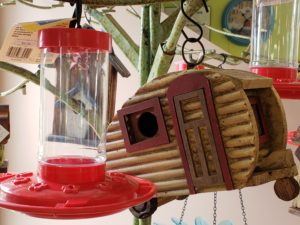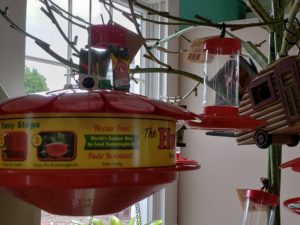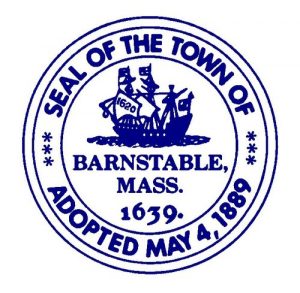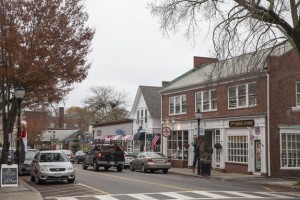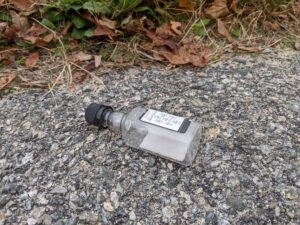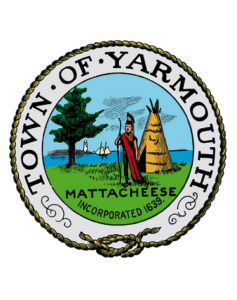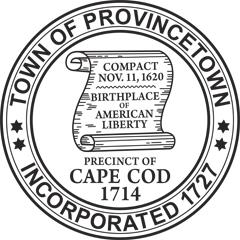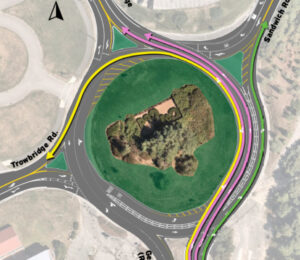For both children and adults, alike, the wonder of watching a hummingbird in motion is something one rarely outgrows. If you want to attract these little beauties to your yard, there are some easy ways to go about it.
The ruby-throated hummingbird is the only species of hummingbird in Massachusetts. Males have ruby-colored throats while females and juveniles do not. While flowering plants are the best source of nectar for hummingbirds, supplementing them with a sugar-water feeder can provide additional sustenance during nesting season and migration, according to the Massachusetts Audubon Society.
“Bright colors will attract hummingbirds to the yard,” said Jeanie Gillis, manager of Pine Tree Nursery and Landscaping, in South Chatham, “and not just red. Pink and blue flowers are great, too. Hummingbirds are easy to attract. Any brightly colored flowers will catch their eye.”
Both perennial and annual varieties will attract the hummingbird, she said. “Catmint is my go-to plant for everything. Hummingbirds love it. It’s an easy plant for anybody who’s gardening. Salvias, with their beautiful blues, are also wonderful. Lavender has a great fragrance and color, too. Red, black, and blue annual salvia – anything with bright color, really – will bring them.”
Gillis said water features can bring these tiny visitors to your yard, as well. “We have a solar fountain here that they love dancing in. They love having a little bit of water to splash in or a place to perch and drink.”
The best time to put feeders out is the last week of April or the first week of May. In the fall, some species begin migration as early as July, though most hummingbirds don’t begin their southward movements until late August or mid-September.
As for nectar, Gillis said homemade or store-bought are both fine, but stay away from red dyes. Nectar is naturally clear.
“It doesn’t matter which store nectar you buy or if you make your own. To make your own, mix one cup of sugar to four cups of water,” she said. And only use refined white sugar. Other sweetening agents have additional ingredients that can prove detrimental to the hummingbirds. Never use artificial sweeteners to make hummingbird nectar.
Pine Tree Nursery and Landscaping carries many varieties of feeders. “We have glass ones, plastic ones… just make sure they have big holes for the birds to get into the nectar. We have a nice selection of really cool, new products. The ‘nectar dot,’ in particular is perfect for kids. You put the nectar in and just hold it in your hand and the hummingbirds will come. It’s great for kids to learn to be still and watch and wait.”
One thing Gillis emphasizes is that any kind of container you use needs to be cleaned. “They can grow mold and mildew if not regularly cleaned once a week. Ants are a good source of protein for the hummingbirds; they’ll eat them. If you don’t like ants, you can get the feeders with an ant moat. But the feeders do need to be regularly cleaned.”
According to Jack Shea, Pine Tree’s assistant manager, there’s another great new hummingbird feeder in stock. “We have a new product called the ‘Humbug.’ You open it up, place two or three bananas in it, and let it sit out there for 7 to 10 days. Within that time, a fruit fly will have landed in there and laid its eggs, and the fruit flies that are generated provide a great source of protein for the hummingbirds.” You don’t have to peel the bananas, he said. In a month or so, clean it out and do it again. “It’s new on the market, and I bought the first one!”
You can leave your feeders out for as long as you have hummingbirds around. You can even continue to provide the feeder after your hummingbirds disappear – late migrants or out-of-range species can show up into early winter. Keep the feeders clean, even if the nectar goes untouched. Always discard any unused nectar in the feeder when you take it down for cleaning.
During the cold winter months, ruby-throated hummingbirds spend their time in Central America and southern Mexico. As the weather begins to turn warm in the spring, they will start to make their northern trip up to the United States once again. Keep your yard ready to welcome them back with a variety of bright colors, as well as a few food sources, and you can enjoy their presence all season long.
Sponsored Content




